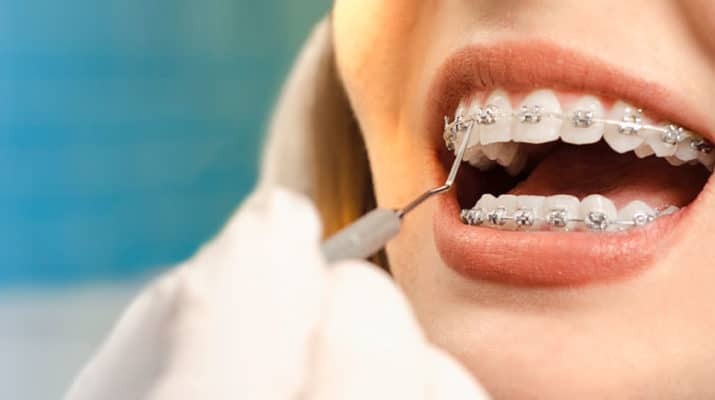By Deborah Jeanne Sergeant
If you or your child has just been fitted with braces, it may seem like your orthodontist has all the bases covered as you visit every eight weeks or so.
Although orthodontists are general dentists with additional training in orthodontia, you still need to see your general dentist for routine cleanings just as before braces.
“It’s important to see your dentist every six months for a cleaning and exam,” said Amy Richter, owner and orthodontist at Amy Richter Orthodontics in Buffalo.
Although orthodontists take the time to give the teeth a good cleaning before applying braces, the general dentist maintains the oral hygiene through visits every six months, or more often as prescribed. Most orthodontists don’t do general or routine cleaning as a general dentist does.
Richter said that before braces are applied, the patient should already have a good understanding of home care and good dental health and then ramp it up while their braces are in place.
“Flossing changes when you have braces because you need to use a floss threader or pick to fit under the wire and between the teeth,” Richter said. “You need to floss to prevent cavities and for the health of the gums. You can use a power toothbrush or a manual, but you should brush for at least two minutes.”
Some power toothbrushes have a built-in timer.
Establishing good home care is even more important while wearing braces because the brackets and wires make brushing and flossing more difficult. It also somewhat disrupts the natural movement of saliva through the mouth.
Richter said that patients need to angle the bristles under the wires and brackets and along the gum line — an area often overlooked. It takes more time to brush and to use a floss threader to get between teeth and clean the gum line; however, that’s the key to achieving the best results and maintaining oral hygiene with braces.
“We give patients the ‘little Christmas tree’ brushes for getting under the wire,” Richter said. “Some like an oral irrigator to clean food out prior to brushing.”
Fluoride treatments can also prevent cavities for patients facing the cleaning challenges of braces.
“Braces don’t cause cavities, but what happens is it’s an obstacle to brush around and a trap to collect food against your teeth,” Richter said.
Because of that obstruction, proper home care and regular dental visits are especially important.
“A lot of people are surprised that even though they come to our office very eight weeks that they do still need to keep up with their appointments with their general dentists,” said Carolyn Schlageter, registered dental assistant.
Schlageter is also the treatment and financial coordinator at Get It Straight in Pittsford, Macedon and Greece. She said her office works closely with the general dentist’s office to help patients take care of their smile and show patients videos on dental care with braces so they learn the techniques of brushing and flossing.
Each employee in the clinical area at Get It Straight is a licensed dental hygienist so they can keep a close watch on their patients’ hygiene, even though they don’t offer traditional dental prophylaxis.
According to Schlageter, one of the misunderstandings that people sometimes make is that they think the white marks on their teeth after braces come off are caused by the braces. “It’s not. It’s decalcification,” she said. “That’s caused by not brushing properly.”
Decalcification can lead to tooth decay, so it’s vital to properly care for teeth as the orthodontic team directs.
As another means to protect teeth, Get It Straight recommends a prescription fluoride toothpaste twice a day.

